Discovering Richmond upon Thames Libraries
Did you know that here in the London Borough of Richmond upon Thames we have thirteen libraries? They range from the small and cosy Kew Library to the grand Teddington Library in its fine Carnegie building. Each library is greatly valued and loved by the local community of which it is a part.
To celebrate Libraries Week 2018 we looked through the archives for interesting facts and ephemera about each of the Borough’s libraries. We also looked at what architectural historian, Nikolaus Pevsner, had to say about our libraries in The Building of England: London 2 South. You’ll find his comments and observations italicised.
The Smallest Library
Kew Library, in North Road, just across from Kew Station, is the smallest library in the Borough. It opened in 1964 in a converted shop that had been a florist and before that a dairy. It didn’t catch Pevsner’s eye possibly because it was in a row of shops and Pevsner had to be selective and would only include buildings of architectural interest.
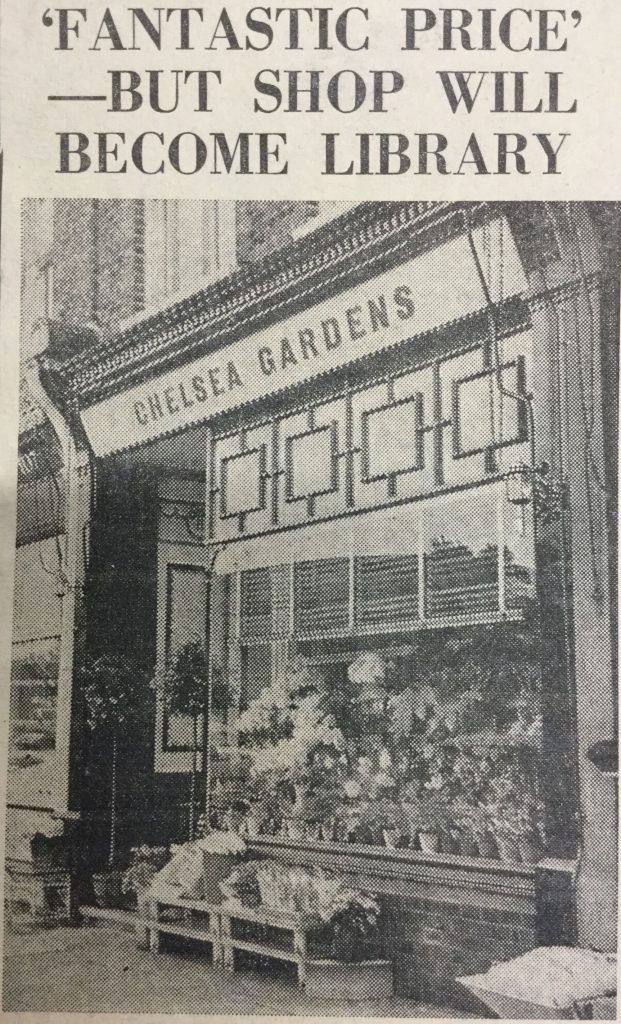
Richmond Town Libraries
Richmond Library opened in 1881 in a building designed by FS Brunton and described as Gothic by Pevsner. Then as now, it stands next door to Richmond Theatre. (Interestingly, there is a history of theatres being within libraries such as Manchester Library Theatre and Sheffield Library Theatre). Richmond Library suffered damage during the Second World War and there is a folder of correspondence about this in the archive. This 1908 exterior photo shows that it has barely changed in 110 years though building is no longer as verdant as the creeper has gone.
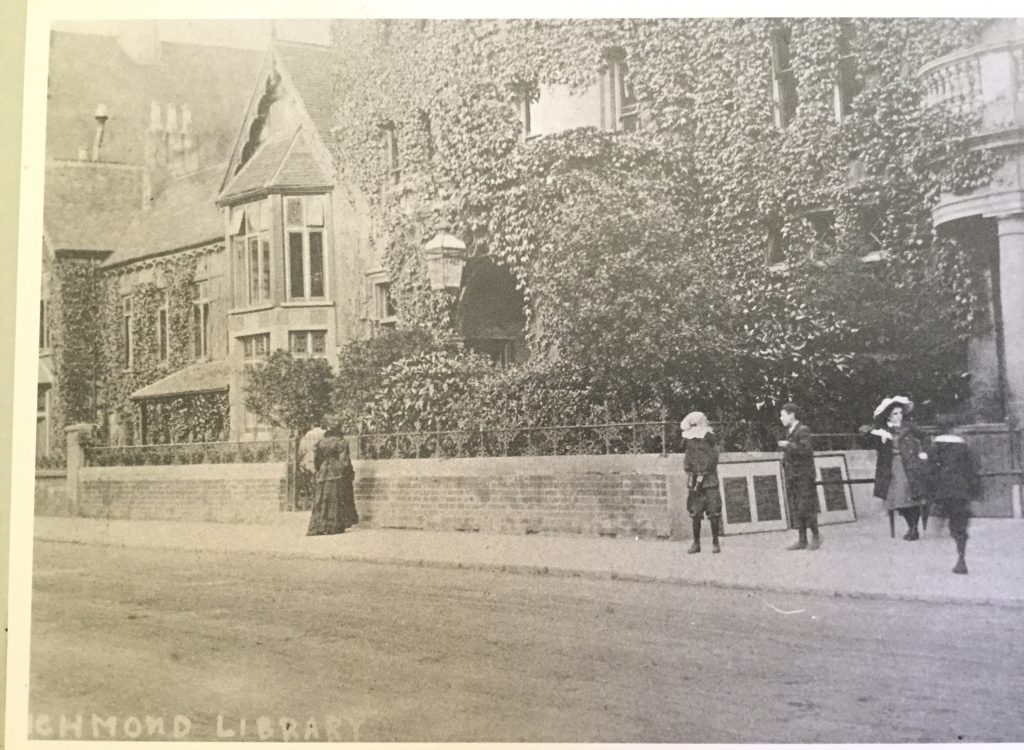
In the archives we found an article from 1935 which featured a photograph of the Library with users browsing the shelves.
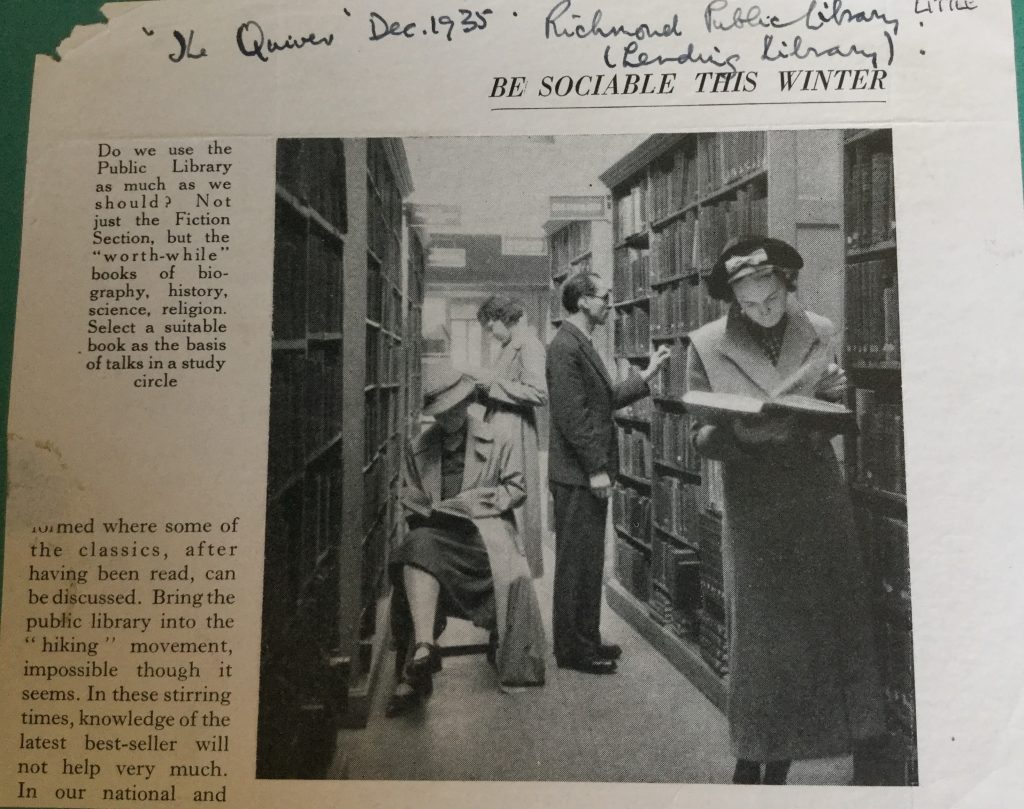
The Information and Reference Library has been housed on the first floor of the Old Town Hall since 1987. Prior to that it was part of Richmond Library. In the archive we found a notice about the move. A highlight of this library is the quiet study space which is housed in the old wood-panelled Council Chamber, overlooking the River Thames.

The Carnegie Libraries
We have Scots born American philanthropist Andrew Carnegie to thank for Teddington Library! He donated £3,350 towards the cost of the building which opened in 1906. In the archive we found a 60 year old library ticket. Pevsner described the library as Jolly Baroque with two scrolly gables.
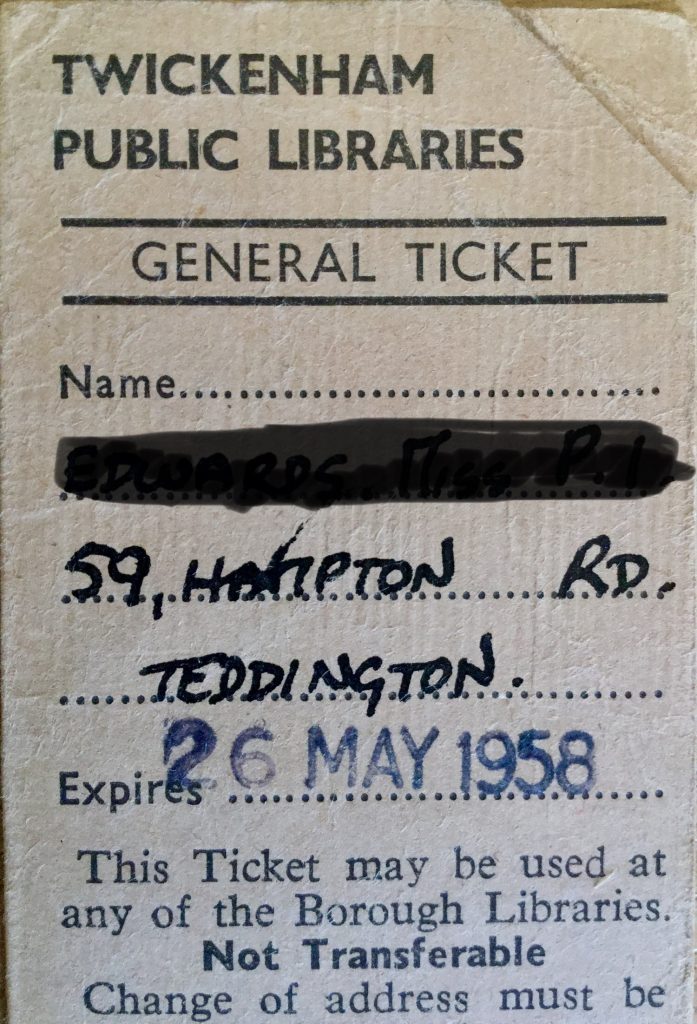
He also donated £6000 towards the cost of Twickenham Library. The official opening was in March 1907. In the archive we found the invitation that was sent to Albert Barkas, the Borough of Richmond’s head librarian. Pevsner says of the library that it was By Howard Goadby, Baroque, with busts of Pope and Tennyson and a Jacobean staircase around the entrance hall.

The Hampton Libraries
Hampton Library is in the beautiful C18th house called Rosehill. According to Pevsner it was built when the then village of Hampton was a fashionable retreat. Libraries have always kept up with technology as this article from 1993 demonstrates.

You may not realise that Hampton Hill Library used to be in Windmill Road and was housed in an old fire station, see photo below. It is current location is on the High Street and it is the only one of our libraries to have a copy of an Alexander Calder mobile!
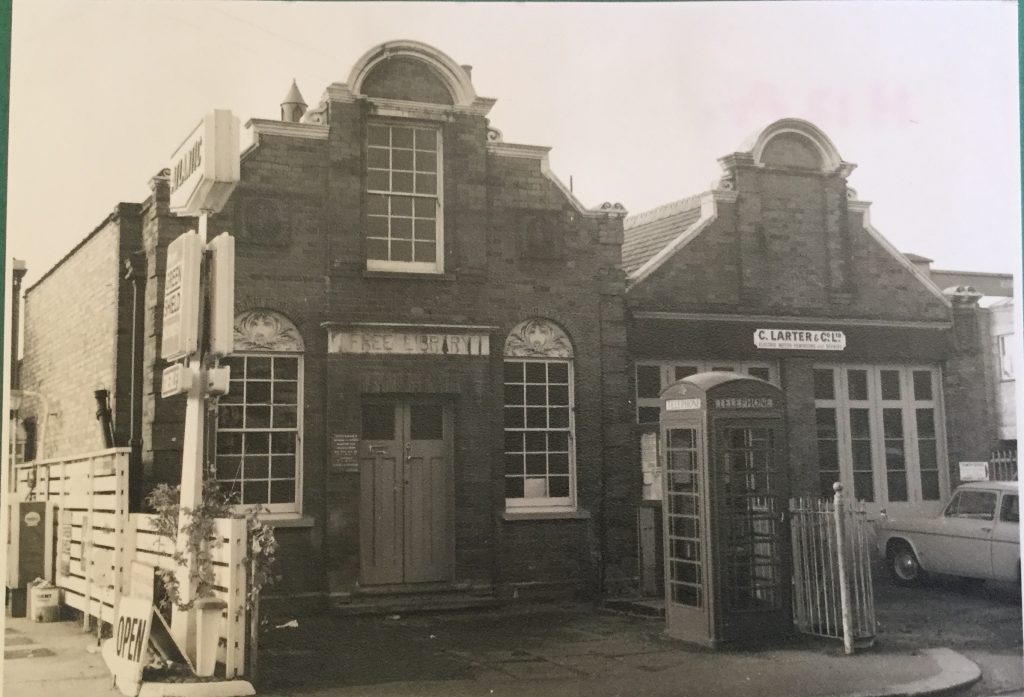
The first library in Hampton Wick opened in 1937 and was housed in the old council chambers on the High Street. It wasn’t until 1979 that the library moved into its purpose built building in Bennet Close. Pevsner doesn’t pass comment but just tells us that the architect was MJ Landolt.
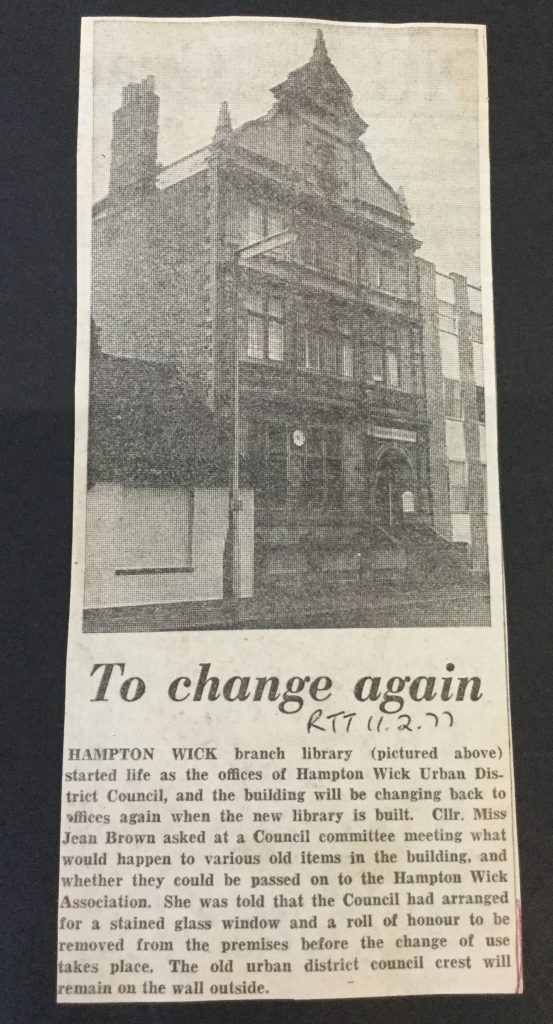
Castelnau, East Sheen, Ham and Whitton Libraries
Castelnau Library opened in 1966 to serve the community of Barnes. In the archives we found this article about a fairy tale mural that was painted for the children’s library by a student from a local college. Pevsner doesn’t mention Castlenau Library.
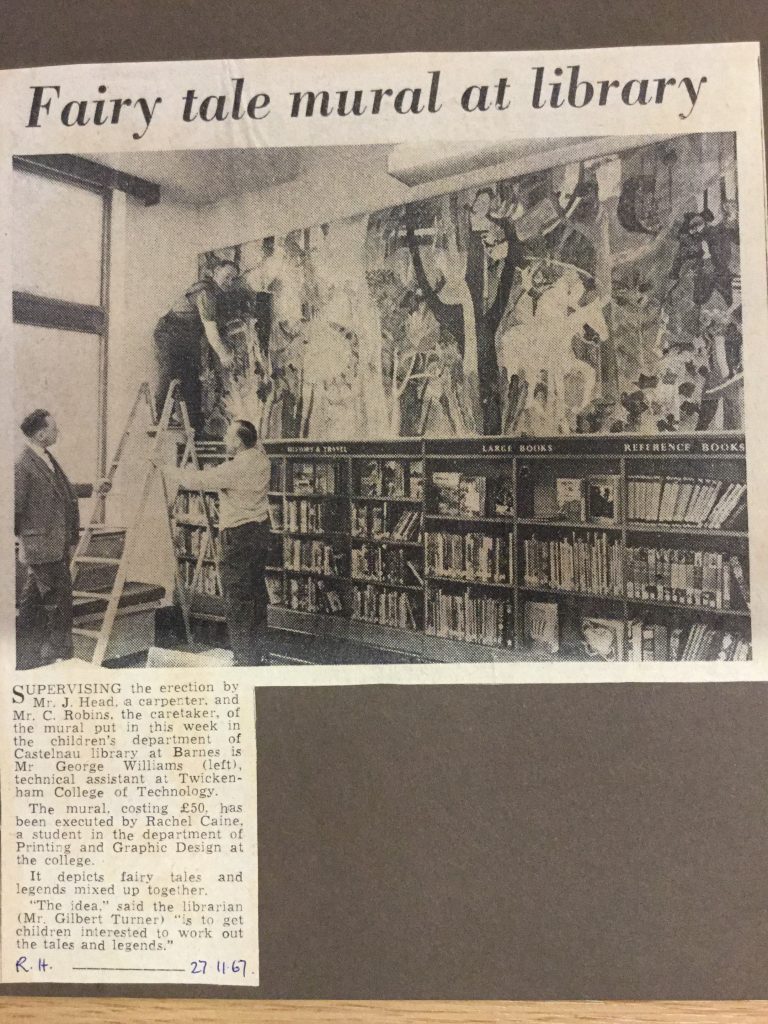
EastSheen Library opened in 1975 as part of the newly built Sheen Lane Centre. Below is an artist’s impression of what the complex was going to look like. Describing the Sheen Lane Center Pevsner says that The unifying details in the idiom of of the mid-seventies;mottled red brick, canted angels and sloping roof-lines, neatly echoed by the hard-landscaping.
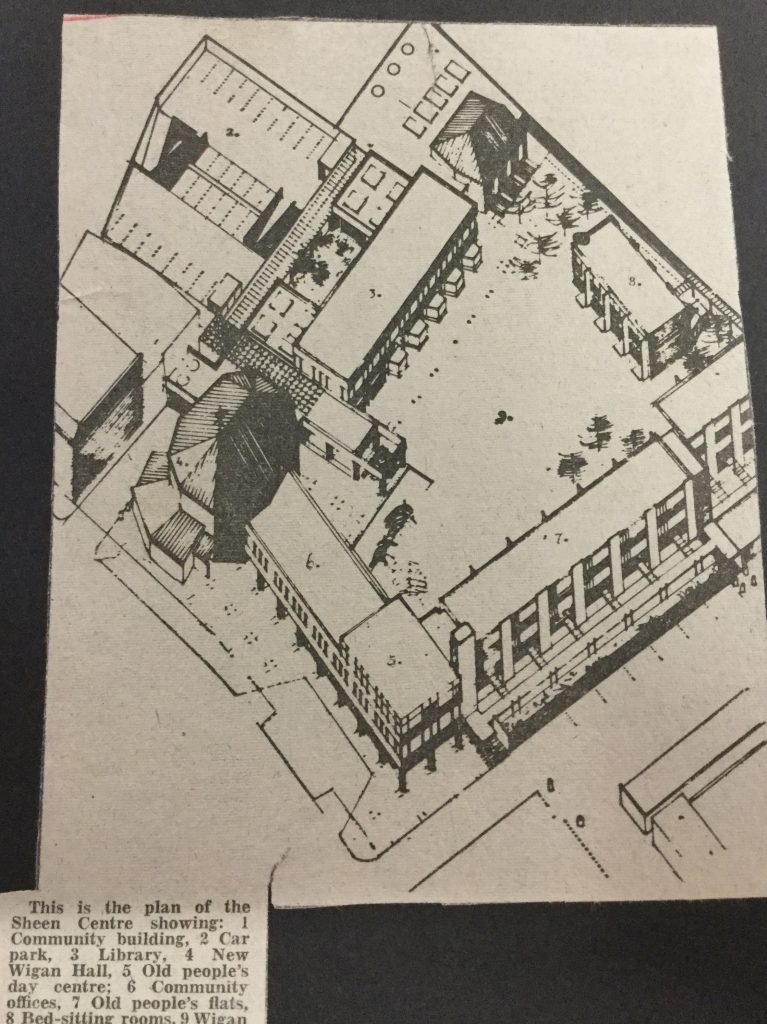
Ham Library has been at the heart of the community since 1952. Sir Compton Mackenzie, the then highly popular writer (author of Whisky Galore which was made into the classic Ealing comedy film) and resident of Edinburgh, opened the library. We haven’t been able to find out why he was asked to open the library. Pevsner must have walked passed the library on his perambulations as he mentions the Bauefort Hosue, part of Grey Court School which is opposite the library but he doesn’t mention the library.
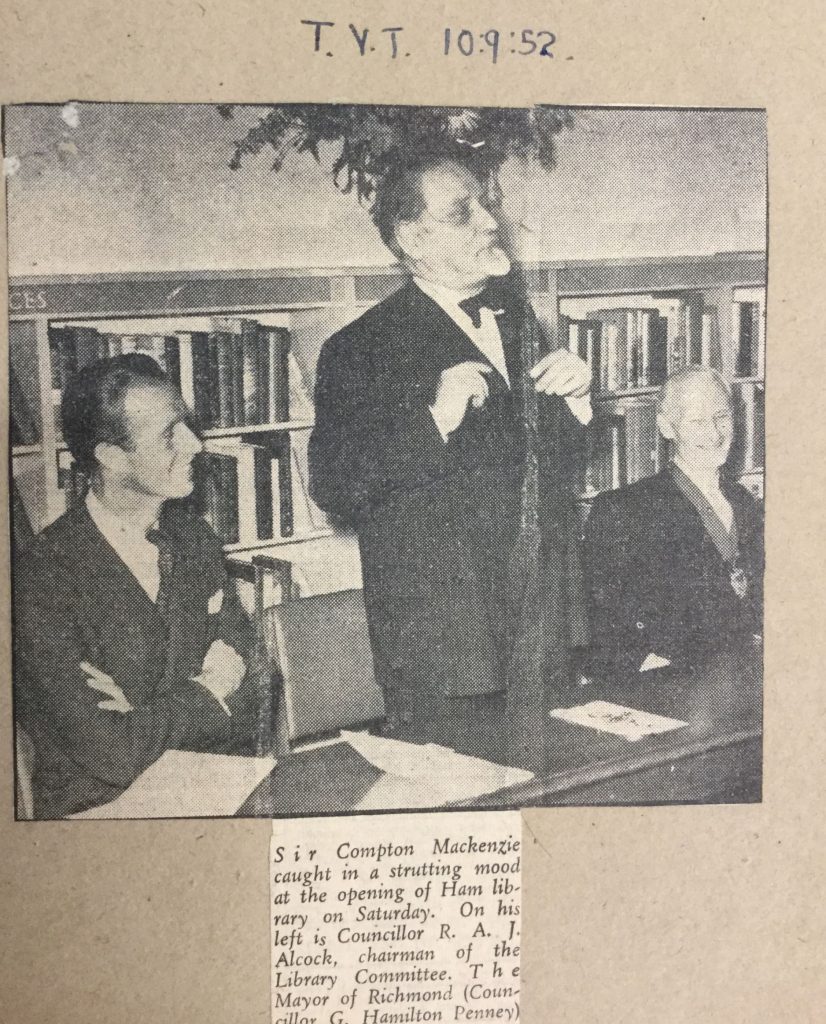
Whitton‘s much anticipated first library opened during wartime in 1940 and was at 64 High Street. Later in 1947 it moved to premises at 38/40. The doors opened on its present purpose-built home in 1973. Once again the library is not commented upon by Pevsner.
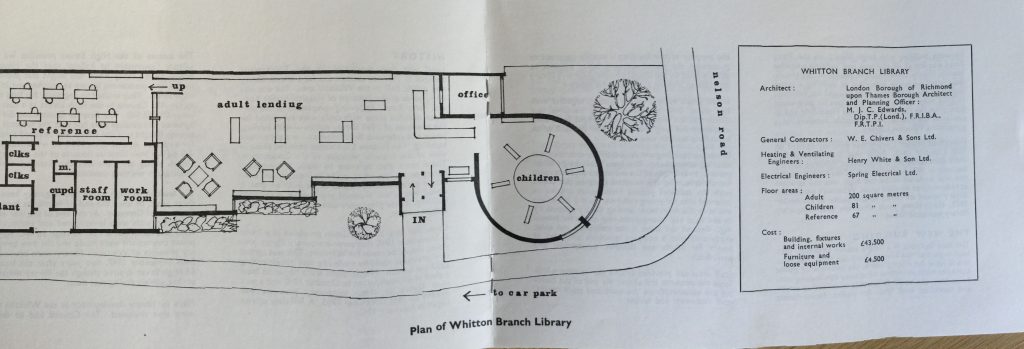
We hope reading this blog might inspire you to to visit all of our libraries!
Richmond Local Studies Library and Archives
The material used in this blog piece can be found in Richmond Local History Library and Archives. Why not visit them on the top floor of the Old Town Hall? You will find a wide range of materials including: books and pamphlets, maps form 1635 to date, photographs of the local area from Victorian times to the present an an extensive collection of prints and drawings.
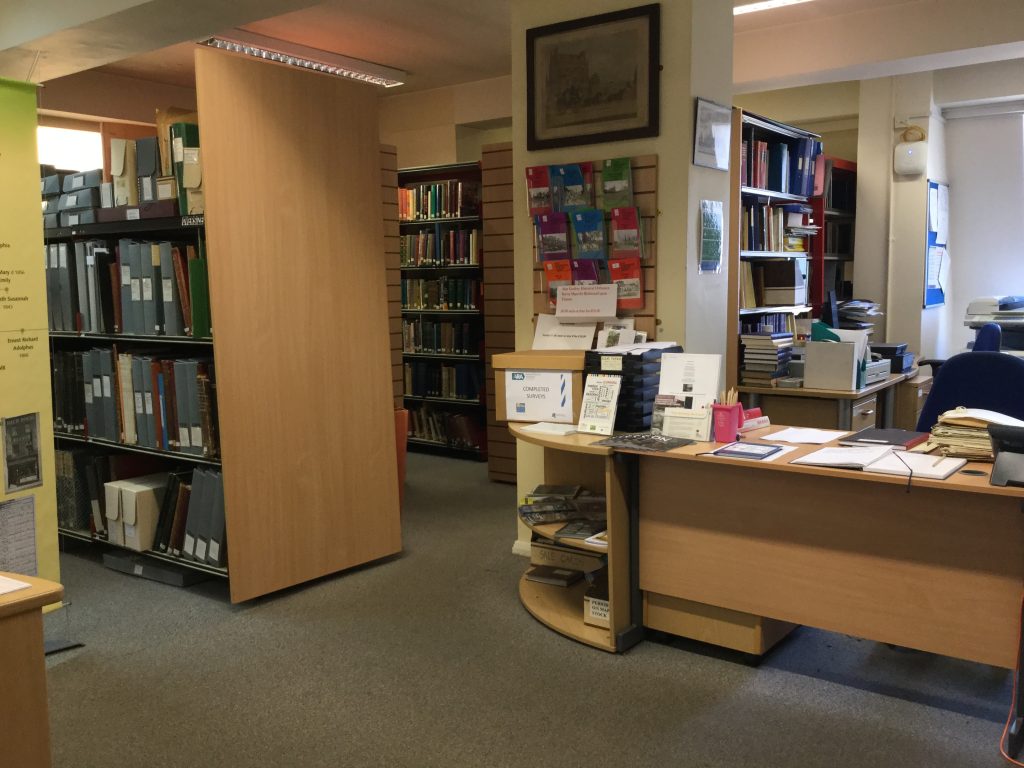
Library members can access the entries in the American National Biography and Oxford Art Online for the people listed above by clicking on the hyperlinks in the text.
[Article reproduced from materials published online during Libraries Week, October 2018]
Fiona Campbell, Library Assistant
